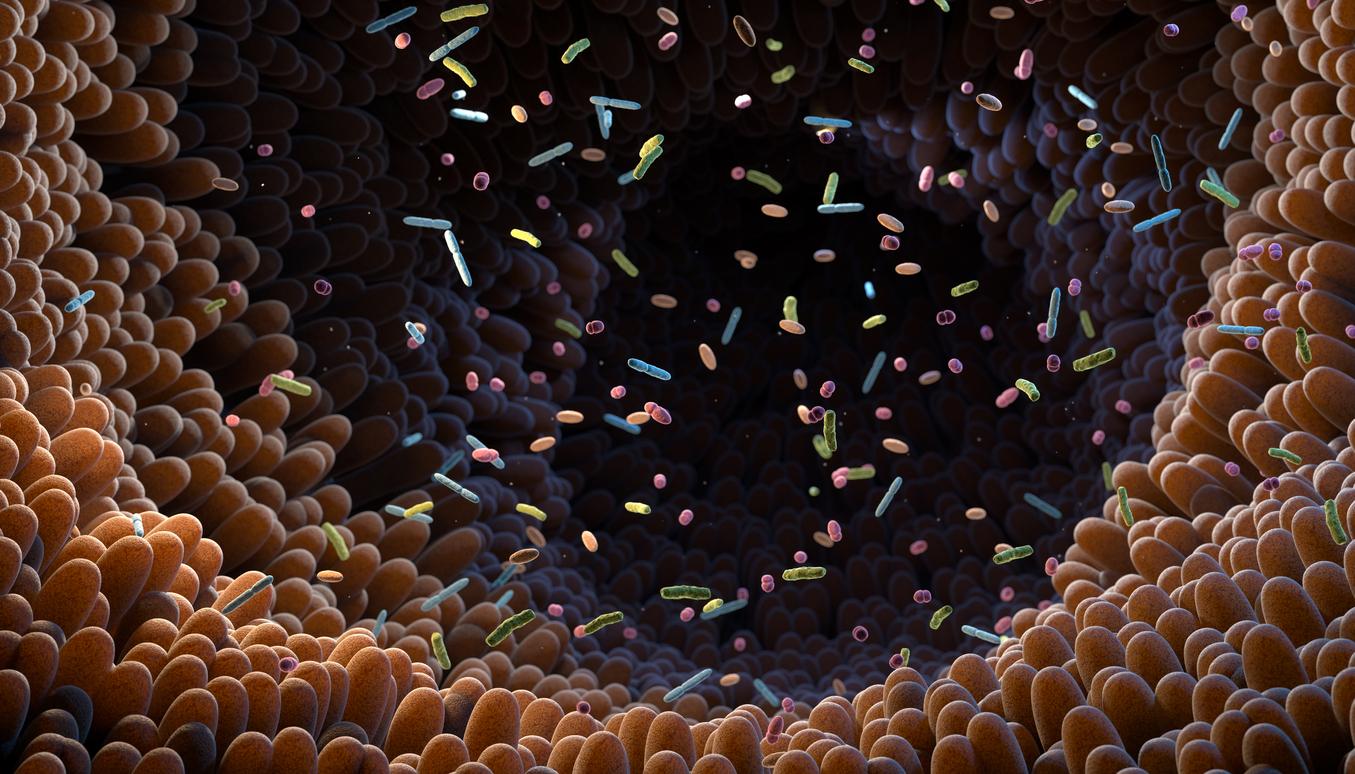
Dr Matteo Serino1, researcher in this field, takes stock of the knowledge and experiences currently being carried out in his research department at INSERM in Toulouse.
The epidemiology concerning inflammatory metabolic diseases makes it possible to observe the worrying progression of these diseases and to predict a future explosion if no solution is considered in this field. Three factors are particularly questioned: genetics, nutrition and metagenomics. Metagenomics is the study of the genome of microorganisms and in particular the bacteria that inhabit our intestines and modulate us in a very profound way.
In the beginning, the intestine
Not only do we know today that we are 90% bacterial and 10% human, in terms of the cells that make us up, but that bacteria have about 100 times more genes than our human DNA. In addition, if our brain weighs about 1.5 kg, the whole gut bacteria weigh more than 2 kg.
What genetic component marks our birth gut microbiota? Is the type of childbirth or whether or not breastfed an important factor in this composition? Is an adult’s microbiota stable or modifiable? These are all questions and many more that researchers are asking themselves today.
What is certain is that a bacteria-free gut produces an immature immune system, and that the quantity and quality of bacteria directly affects immune capacity, as has been observed in axenic, germ-free mice that exhibit an immature immune system as well as other pathophysiological alterations such as reduced fertility, brain and behavioral disorders, etc.
Bacteria have their preferences
The intestinal microbiota is a major regulator of immunity and is intensely involved in the regulation of host gene expression. The human microbiota is dominated by two groups of bacteria: Firmicutes and Bacteroidetes. These two groups or phyla make up almost 90% of all gut bacteria. An individual will see an increase in their Firmicutes / Bacteroidetes ratio following an obesitogenic, high fat diet. On the other hand, in the case of a non-obese diabetic person, we see the reverse process, ie an increase in Bacteroidetes.
However, today, a simple identification of the number of bacteria by type, which represents “the microbiota”, is not sufficient. This involves establishing the map of bacterial gene functions, ie “the microbiome”. This mapping would allow us to better understand how intestinal bacteria modulate our metabolism.
The microbiota, pilot of other functions?
It is increasingly believed that brain behavior, entero-endocrine metabolism, lipid and energy metabolism, cardiovascular risk and periodontitis are driven by the microbiota. For example, hepatic (fatty liver) and non-alcoholic (NASH) steatosis could be caused by a bacterial imbalance in the intestine. Intestinal hyperpermeability will weigh on liver functions, at the heart of all metabolic transformations. Thus obvious links have been established between intestinal hyperpermeability and metabolic syndrome. A fatty diet contributes to a decrease in Gram + bacteria, and therefore to an increase in Gram – bacteria, which leads to an increase in LPS (lipopolysaccharides), extremely powerful inflammatory molecules that activate the immune system, which put it on alert as well. ‘there was danger. The immune system then goes into overdrive, it generates inflammation which will destabilize the whole and, in the long term, cause an insulin-resistance which is first local and then systemic. The endocrine system will be hit as a result, and the production of hormones, for example insulin from the pancreas, will be disrupted.
These cascading imbalances can also lead, for example, to an increase in the cardiovascular risk by an affected metabolism which will create foam cells, at the origin of atheromatous plaques.
Faecal transfer, medicine of the future?
Fecal transfer has been tested on mice and works. Bacteria isolated from the stool are transferred from a healthy intestine to a diseased intestine. This transfer is offered to patients infected with Clostridium difficile and who show strong resistance to antibiotic therapy. In France, several university hospitals, such as the Lille university hospital, already carry out this type of transfer of faecal suspensions from one individual to another. In the United States, currently, three thousand transfers are operated per year. In Australia as well, it is a technique increasingly used, not only for infections with Clostridium difficile but also for other intestinal disorders such as, for example, chronic intestinal inflammation (irritable bowel syndrome). The transfer is carried out by high route (nasogastric) or by low route (colon, no longer used). This treatment has been shown to be able to correct the metabolic syndrome, as well as other pathologies of the gastrointestinal tract.
|
Dr Matteo Serino (1), doctor of science, researcher, University Paul Sabatier 3 of Toulouse; National Institute of Health and Medical Research (INSERM), Joint Research Unit (UMR) 1048-Institute of Metabolic and Cardiovascular Diseases (I2MC) of Toulouse, France. Raissa Blankoff, naturopath-aromatherapist, www.naturoparis.com |
















